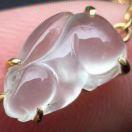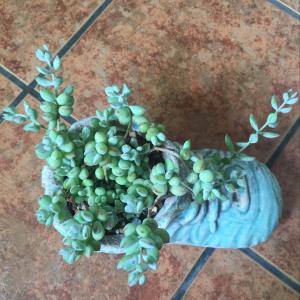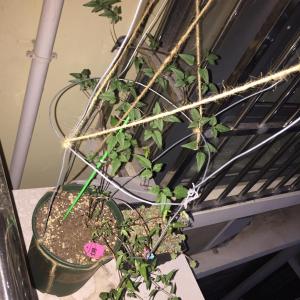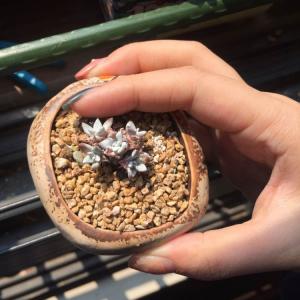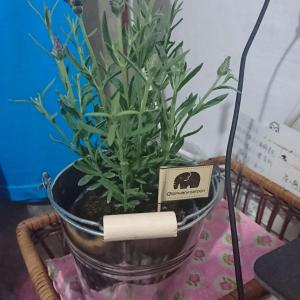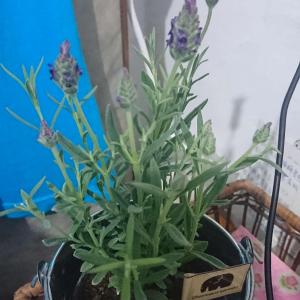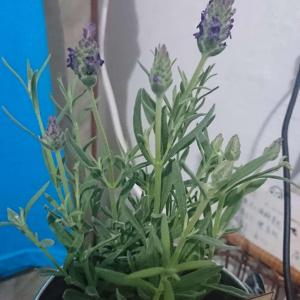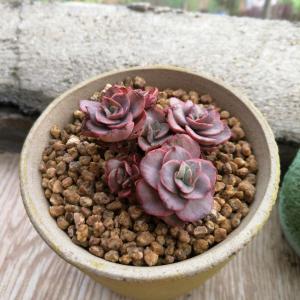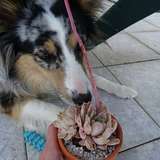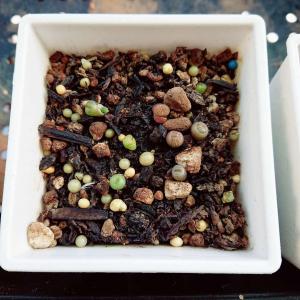文章
Miss Chen
2018年03月30日

Description: This perennial wildflower consists of a pair of basal leaves and a flowering stalk. The basal leaves are 3-6" long and about one-half as much across; they are medium green, glabrous, oval-ovate in shape, slightly succulent, and smooth along their margins. The lower side of each basal leaf is slightly keeled. The inflorescence is an erect raceme about 4-10" tall that bears 5-30 flowers. The central stem of the raceme is light green, hairless, and rather stout. Individual flowers are about ¾–1" across, consisting of 3 sepals, 3 petals, and a short reproductive column. Each sepal is up to ½" long, greenish white, and linear in shape. The 2 lateral petals are up to ½" long, pale purple, filiform (worm-like) in shape, and drooping. The lower petal is the lip of the flower; it is about ½" long, pale purple, obovate in shape with faint purple veins, and either flat or gently curved. Above the base of the lip, there is an incurved reproductive column less than ¼" in length that is greenish.
Each flower has a slender pedicel about ¾" long that is reddish purple and glabrous. At the base of each pedicel, there is a small triangular bract. The blooming period occurs from late spring to mid-summer and lasts 3-4 weeks for a colony of plants. The flowers begin to bloom from the bottom of the raceme to its apex. There is no noticeable floral scent. Successfully fertilized flowers produce seed capsules about ½" long or a little longer. Individual capsules are erect on their pedicels; they are ellipsoid with several longitudinal veins. Eventually, they split open to release numerous tiny seeds, which are distributed by the wind. The root system consists of a bulbous corm and slightly fleshy fibrous roots. A new corm develops adjacently to the old corm, from which future flowers and leaves will be produced; the old corm eventually withers away.

Cultivation: Purple Twayblade prefers partial sunlight to light shade and moist to dry-mesic conditions in well-drained areas. This orchid adapts to many soil types, including rich loam, sandy loam, glacial till, and thin rocky soil with a slightly acid pH. To flourish, this orchid and its seeds require the presence of a particular strain of a Rhizoctonia/Tulasnella fungus. Otherwise, it cannot survive.
Range & Habitat: The native Purple Twayblade is widely distributed throughout Illinois (see Distribution Map). Depending on the area, its abundance varies from rare to occasional. Habitats include open upland woodlands, small openings in wooded areas from fallen trees, upland savannas and sandy savannas, sandstone glades and partially shaded cliffs, sparse thickets in barren areas, abandoned shrubby fields, pine plantations (if not too shady), and small meadows in wooded areas. Purple Twayblade is associated with oak-hickory woodlands and mixed woodlands (pines and deciduous trees) in mesic to upland areas. Because excessive shade from canopy trees and shrubs can cause entire colonies of plants to die out, occasional reduction of woody vegetation from wildfires, wind-thrown trees, etc., helps to maintain existing populations of this orchid.

Faunal Associations: Very little is known about floral-faunal relationships. If the flowers are not cross-pollinated by insect visitors, they fail to develop seed capsules. Unfortunately, such insect visitors are uncommon and largely unknown at the present time. Charles Robertson observed the Anthomyiid fly Pegoplata juvenalis and the plant bug Lopidea medius (aka Lopidea media) visiting the flowers, but he did not regard them as effective pollinators. Christensen (1994) has suggested that the floral pollinators are flesh flies (Sarcophagidae) because the pale purple color and veins of the flowers may resemble carrion. It is possible that the flowers produce an odor that the relatively insensitive human nose cannot detect. The succulent basal leaves are browsed by both White-Tailed Deer and the Cottontail Rabbit. Where these animals are abundant, populations of this orchid may experience a significant decline from excessive herbivory.

Photographic Location: A small meadow in Vermilion County, Illinois, and a savanna in Champaign County, Illinois.
Comments: The flowers of this small orchid have an unusual spidery appearance. Lacking bright distinctive colors, they have a tendency to blend into the background. Because no other orchid in Illinois closely resembles Purple Twayblade, it is easy to identify. Its nearest relative in the state, Liparis loeselii (Lesser Twayblade), has less showy flowers that are smaller in size, yellow-green, and self-fertile. Instead of Purple Twayblade, other common names of Liparis liliifolia are Large Twayblade and Lily-Leaved Twayblade.
Each flower has a slender pedicel about ¾" long that is reddish purple and glabrous. At the base of each pedicel, there is a small triangular bract. The blooming period occurs from late spring to mid-summer and lasts 3-4 weeks for a colony of plants. The flowers begin to bloom from the bottom of the raceme to its apex. There is no noticeable floral scent. Successfully fertilized flowers produce seed capsules about ½" long or a little longer. Individual capsules are erect on their pedicels; they are ellipsoid with several longitudinal veins. Eventually, they split open to release numerous tiny seeds, which are distributed by the wind. The root system consists of a bulbous corm and slightly fleshy fibrous roots. A new corm develops adjacently to the old corm, from which future flowers and leaves will be produced; the old corm eventually withers away.

Cultivation: Purple Twayblade prefers partial sunlight to light shade and moist to dry-mesic conditions in well-drained areas. This orchid adapts to many soil types, including rich loam, sandy loam, glacial till, and thin rocky soil with a slightly acid pH. To flourish, this orchid and its seeds require the presence of a particular strain of a Rhizoctonia/Tulasnella fungus. Otherwise, it cannot survive.
Range & Habitat: The native Purple Twayblade is widely distributed throughout Illinois (see Distribution Map). Depending on the area, its abundance varies from rare to occasional. Habitats include open upland woodlands, small openings in wooded areas from fallen trees, upland savannas and sandy savannas, sandstone glades and partially shaded cliffs, sparse thickets in barren areas, abandoned shrubby fields, pine plantations (if not too shady), and small meadows in wooded areas. Purple Twayblade is associated with oak-hickory woodlands and mixed woodlands (pines and deciduous trees) in mesic to upland areas. Because excessive shade from canopy trees and shrubs can cause entire colonies of plants to die out, occasional reduction of woody vegetation from wildfires, wind-thrown trees, etc., helps to maintain existing populations of this orchid.

Faunal Associations: Very little is known about floral-faunal relationships. If the flowers are not cross-pollinated by insect visitors, they fail to develop seed capsules. Unfortunately, such insect visitors are uncommon and largely unknown at the present time. Charles Robertson observed the Anthomyiid fly Pegoplata juvenalis and the plant bug Lopidea medius (aka Lopidea media) visiting the flowers, but he did not regard them as effective pollinators. Christensen (1994) has suggested that the floral pollinators are flesh flies (Sarcophagidae) because the pale purple color and veins of the flowers may resemble carrion. It is possible that the flowers produce an odor that the relatively insensitive human nose cannot detect. The succulent basal leaves are browsed by both White-Tailed Deer and the Cottontail Rabbit. Where these animals are abundant, populations of this orchid may experience a significant decline from excessive herbivory.

Photographic Location: A small meadow in Vermilion County, Illinois, and a savanna in Champaign County, Illinois.
Comments: The flowers of this small orchid have an unusual spidery appearance. Lacking bright distinctive colors, they have a tendency to blend into the background. Because no other orchid in Illinois closely resembles Purple Twayblade, it is easy to identify. Its nearest relative in the state, Liparis loeselii (Lesser Twayblade), has less showy flowers that are smaller in size, yellow-green, and self-fertile. Instead of Purple Twayblade, other common names of Liparis liliifolia are Large Twayblade and Lily-Leaved Twayblade.
0
0
文章
Miss Chen
2018年03月30日

Description: This perennial plant is up to 6' tall and unbranched, except at the inflorescence. The central stem is stout and smooth. The leaves usually occur in whorls of 3-9 along the stem, although some of the upper leaves may occur along the stem in pairs or alternate individually. The leaves are individually up to 7" long and 1" across, rather stiff in texture, and sometimes curve upward along their margins. They are lanceolate or narrowly ovate, with smooth margins and parallel venation. Above the terminal leaves of the central stem, 1-12 flowers hang downward from stalks about 4-8" long that spread upward and outward. Some flowering stalks may also appear from the axils of the upper leaves. Each showy flower is about 3-4" across, with 6 tepals that flare outward and then curve strongly backward beyond the base of the flower. These tepals are yellowish orange or green near the base of the flower, and become orange to dark orange towards their tips. They have numerous brownish purple dots toward the throat of the flower. The stamens are quite conspicuous and strongly exerted from the base of the flower, with reddish brown to black anthers that are ½" long or longer in length. They surround a long whitish orange stigma that curls slightly upward and is orange or brown toward its tip. The blooming period occurs from early to mid-summer, and lasts about a month. There is no noticeable floral scent. The oblong 3-lobed seedpods contain closely stacked, flat seeds with thin papery wings – this enables them to be carried some distance by gusts of wind. The root system consists of a white bulb, from which new offsets may form.
Cultivation: The preference is full or partial sun, rich loamy soil, and moist conditions. An established plant, however, can withstand some drought. Growing this plant from seeds is slow and difficult, but relatively easy from bulbs or transplants. There is some tendency to flop over if there is inadequate support from neighboring plants.
Range & Habitat: The native Turk's Cap Lily occurs primarily in a few counties in southern Illinois (see Distribution Map). This is a rare plant in the wild in Illinois, although it is occasionally cultivated in gardens because of the showy flowers. Habitats include moist meadows in woodland areas, open woodlands and young flatwoods, thickets, and areas along lakes. This plant is occasionally introduced into natural areas outside of its original range.

Faunal Associations: Cross-pollination is required for fertile seeds. The large showy flowers appear to be designed to attract hummingbirds and larger day-flying insects, such as Sphinx moths, Hummingbird moths, long-tongued bees, and the larger butterflies. Charles Robertson in Flowers and Insects (1929) observed the Greater Fritillary, Monarch, and Spicebush Swallowtail butterflies as occasional visitors to Lilium superbum, which was probably Lilium michiganense, as the former species doesn't occur near Carlinville, Illinois. Larger herbivores, such as deer and livestock, will consume mature plants, while immature plants are vulnerable to small herbivores. Small rodents may eat the bulbs.
Photographic Location: The photographs were taken at Meadowbrook Park in Urbana, Illinois, where this species was introduced.

Comments: This is a very beautiful plant. The Turk's Cap Lily can be distinguished from the more common Lilium michiganense (Michigan Lily) as follows: 1) the former species is restricted to southern Illinois, although it may be introduced elsewhere; 2) some of the anthers of the former are greater than ½" long, while the anthers of the latter species are always less than ½" long; 3) the former has white bulbs, while the latter has yellow bulbs, and 4) the former species may have a conspicuous 6-pointed green star at the base of the flower, although this feature isn't always present in some local ecotypes. The stamens of Turk's Cap Lily are even more strongly exerted from the throat of the flower than is the case for the Michigan Lily, and it tends to be a taller, more robust plant.
Cultivation: The preference is full or partial sun, rich loamy soil, and moist conditions. An established plant, however, can withstand some drought. Growing this plant from seeds is slow and difficult, but relatively easy from bulbs or transplants. There is some tendency to flop over if there is inadequate support from neighboring plants.
Range & Habitat: The native Turk's Cap Lily occurs primarily in a few counties in southern Illinois (see Distribution Map). This is a rare plant in the wild in Illinois, although it is occasionally cultivated in gardens because of the showy flowers. Habitats include moist meadows in woodland areas, open woodlands and young flatwoods, thickets, and areas along lakes. This plant is occasionally introduced into natural areas outside of its original range.

Faunal Associations: Cross-pollination is required for fertile seeds. The large showy flowers appear to be designed to attract hummingbirds and larger day-flying insects, such as Sphinx moths, Hummingbird moths, long-tongued bees, and the larger butterflies. Charles Robertson in Flowers and Insects (1929) observed the Greater Fritillary, Monarch, and Spicebush Swallowtail butterflies as occasional visitors to Lilium superbum, which was probably Lilium michiganense, as the former species doesn't occur near Carlinville, Illinois. Larger herbivores, such as deer and livestock, will consume mature plants, while immature plants are vulnerable to small herbivores. Small rodents may eat the bulbs.
Photographic Location: The photographs were taken at Meadowbrook Park in Urbana, Illinois, where this species was introduced.

Comments: This is a very beautiful plant. The Turk's Cap Lily can be distinguished from the more common Lilium michiganense (Michigan Lily) as follows: 1) the former species is restricted to southern Illinois, although it may be introduced elsewhere; 2) some of the anthers of the former are greater than ½" long, while the anthers of the latter species are always less than ½" long; 3) the former has white bulbs, while the latter has yellow bulbs, and 4) the former species may have a conspicuous 6-pointed green star at the base of the flower, although this feature isn't always present in some local ecotypes. The stamens of Turk's Cap Lily are even more strongly exerted from the throat of the flower than is the case for the Michigan Lily, and it tends to be a taller, more robust plant.
0
0
文章
Miss Chen
2018年03月27日

Description: This is a perennial wildflower about 2½-6' tall that is either unbranched or sparingly branched. The central stem is light gray-green, densely pubescent, terete, and rather stout. Alternate leaves occur at intervals along this stem. Individual leaves are up to 7" long and 6" across; they are oval-cordate in outline with 3-7 palmate lobes and crenate-dentate margins. Usually the middle lobes of the leaves are larger than the lateral lobes. The upper surface of these leaves is medium green and hairless to sparsely pubescent, while their lower surface is light gray-green and pubescent. The petioles are up to 6" long, light gray-green, and pubescent. Sometimes short secondary stems with small leaves develop from the axils of the leaves on the central stem. Flowers are produced either individually or in clusters of 2-3 from the axils of the leaves along the upper half of each plant. The pedicels of these flowers are rather short (up to ¾" long), light gray-green, and pubescent. Each flower is 1¼-2½" across, consisting of 5 light pink petals (obcordate in shape), 5 light gray-green sepals (ovate in shape) that are joined together at the base, a central reproductive column, and 3 light gray-green floral bracts (linear in shape). Individual sepals are about ½" in length, while individual floral bracts are about the same length; both floral bracts and sepals are short-pubescent. The stamens are located along the outer half of the reproductive column, while the styles are located at its tip. The anthers of the stamens are pale yellow or white.
The blooming period occurs during the summer, lasting about 2 months. Individual flowers are short-lived and slightly fragrant. Afterwards, each fertile flower is replaced by a ring of carpels containing the seeds. The carpels are reniform and narrowly wedge-shaped; their outer edges are pubescent. Each carpel contains 2-4 seeds (about 3 mm. in length). The root system consists of a short stout taproot and rhizomes. Vegetative colonies of plants occasionally develop from the rhizomes.
Cultivation: The preference is full or partial sun, moist to mesic conditions that are well-drained, and soil containing some loam or rocky material. Germination of the seeds requires scarification of the seed coat through mechanical means or by fire. In a dormant state, the seeds can be remain viable for up to 50 years. Cross-pollination with genetically distinct plants is required for the production of viable seeds.

Range & Habitat: The native Kankakee Mallow has been found only in Kankakee County, where it is rare and state-listed as 'endangered' (see Distribution Map). Habitats consist of rocky riverbanks, woodland edges, open rocky woodlands, and abandoned fields. In all of these habitats within Illinois, the underlying bedrock of the thin soil consists of dolomite. Occasional wildfires are beneficial in maintaining populations of Kankakee Mallow as they stimulate the germination of seeds and reduce competition from woody vegetation. This wildflower has been cultivated successfully in gardens.
Faunal Associations: Very little is known about floral-faunal relationships for this rare wildflower. The flowers are probably cross-pollinated by various long-tongued and short-tongued bees. White-Tailed Deer and other mammalian herbivores readily browse on the foliage. It may be necessary to place wire cages over individual plants in order to protect them from such animals.

Photographic Location: A flower garden in Urbana, Illinois.
Comments: The Kankakee Mallow has attractive flowers and foliage. This rare wildflower is endemic to Illinois, although an adventive population has been found in Indiana near a railroad. It is thought that members of a Chicago wildflower society may have established this population by throwing seeds of the Kankakee Mallow out of the window of a passing train during the early 20th century. There are some differences of opinion regarding the taxonomic classification of the Kankakee Mallow. It has been classified as the typical variety of a more western species, Iliamna rivularis (Mountain Hollyhock), and sometimes it is considered the same species as the more eastern Iliamna corei (Peter's Mountain Mallow). This last species was discovered on a sandstone outcrop in Virginia, where it was under attack by feral goats. The Kankakee Mallow differs from Peter's Mountain Mallow by having flowers that are fragrant. In general, mallows of the Iliamna genus differ from many other mallows by having 3 linear floral bracts behind the sepals of each flower.
The blooming period occurs during the summer, lasting about 2 months. Individual flowers are short-lived and slightly fragrant. Afterwards, each fertile flower is replaced by a ring of carpels containing the seeds. The carpels are reniform and narrowly wedge-shaped; their outer edges are pubescent. Each carpel contains 2-4 seeds (about 3 mm. in length). The root system consists of a short stout taproot and rhizomes. Vegetative colonies of plants occasionally develop from the rhizomes.
Cultivation: The preference is full or partial sun, moist to mesic conditions that are well-drained, and soil containing some loam or rocky material. Germination of the seeds requires scarification of the seed coat through mechanical means or by fire. In a dormant state, the seeds can be remain viable for up to 50 years. Cross-pollination with genetically distinct plants is required for the production of viable seeds.

Range & Habitat: The native Kankakee Mallow has been found only in Kankakee County, where it is rare and state-listed as 'endangered' (see Distribution Map). Habitats consist of rocky riverbanks, woodland edges, open rocky woodlands, and abandoned fields. In all of these habitats within Illinois, the underlying bedrock of the thin soil consists of dolomite. Occasional wildfires are beneficial in maintaining populations of Kankakee Mallow as they stimulate the germination of seeds and reduce competition from woody vegetation. This wildflower has been cultivated successfully in gardens.
Faunal Associations: Very little is known about floral-faunal relationships for this rare wildflower. The flowers are probably cross-pollinated by various long-tongued and short-tongued bees. White-Tailed Deer and other mammalian herbivores readily browse on the foliage. It may be necessary to place wire cages over individual plants in order to protect them from such animals.

Photographic Location: A flower garden in Urbana, Illinois.
Comments: The Kankakee Mallow has attractive flowers and foliage. This rare wildflower is endemic to Illinois, although an adventive population has been found in Indiana near a railroad. It is thought that members of a Chicago wildflower society may have established this population by throwing seeds of the Kankakee Mallow out of the window of a passing train during the early 20th century. There are some differences of opinion regarding the taxonomic classification of the Kankakee Mallow. It has been classified as the typical variety of a more western species, Iliamna rivularis (Mountain Hollyhock), and sometimes it is considered the same species as the more eastern Iliamna corei (Peter's Mountain Mallow). This last species was discovered on a sandstone outcrop in Virginia, where it was under attack by feral goats. The Kankakee Mallow differs from Peter's Mountain Mallow by having flowers that are fragrant. In general, mallows of the Iliamna genus differ from many other mallows by having 3 linear floral bracts behind the sepals of each flower.
0
0
文章
Miss Chen
2018年03月27日

Description: This perennial vine is up to 30' long; it dies back to the ground each year. The stems are light green or light tan, stout, and smooth to prickly-bristly. The opposite leaves are up to 6" long and 4" across; smaller leaves are usually oval-cordate in shape, but larger leaves are palmate with 3 lobes (rarely with 5). These leaves have a rough texture and coarse serration along the margins; they are medium green or yellowish green on their upper surfaces, and whitish green below. The long petioles are light green or light tan, stout, and prickly-bristly. At the base of each petiole is a pair of lanceolate stipules. The hairiness or pubescence of the stems and leaves is variable, if it is present at all. Usually, there are small white hairs along the major veins on the leaf undersides; sometimes these veins are also prickly. American Hops is dioecious, with male (staminate) and female (pistillate) plants. The male plants produce drooping panicles of staminate flowers. These panicles are up to 12" long and 6" across; they contain numerous small flowers that are yellowish or whitish green. Each staminate flower has 5 sepals, 5 stamens, and no petals. It has a star-like appearance and spans about ¼" across, hanging downward from a slender pedicel that is often slightly pubescent. The non-sticky pollen is produced in great abundance and it is easily dispersed into the air.
The female plants produce odd-looking cone-shaped spikes of pistillate flowers (aments) from the axils of the leaves. A spike of pistillate flowers is up to 3" long, 2" across, and ovoid in shape; it usually hangs downward from a slender peduncle. The pistillate spike consists of overlapping green bracts that are ovate; there is a pair of pistillate flowers tucked between each adjacent pair of bracts. Each pistillate flower consists of little more than an ovary with a sticky stigma that is long and slender. Both the male and female flowers bloom during the late summer for about 2 weeks. The male flowers quickly turn brown and wither away, while the fruits (or aments) of the female flowers persist longer and gradually turn brown. Each pistillate flower produces a capsule with a single seed that is resinous and aromatic. This vine reproduces by reseeding itself.

Cultivation: The preference is partial or full sun, fertile soil, and moist to slightly dry conditions. This robust vine will also grow in poor soil that is rocky or gravelly. It can be quite aggressive and appears to have few problems with disease.
Range & Habitat: The native American Hops is a common plant that occurs in most areas of central and northern Illinois. However, it less common or absent from many areas of southern Illinois (see Distribution Map). Other varieties of this vine also occur in Eurasia. American Hops occurs in openings of both upland and floodplain forests, woodland borders, thickets, and slopes of bluffs. In more developed areas, it is found along fence rows, vacant lots, areas along railroads, and miscellaneous waste areas. This plant favors areas that are more or less disturbed, whether from human activities or natural causes. It often clambers over surrounding vegetation, including shrubs and small trees.

Faunal Associations: Pollination is by wind, rather than insects. However, the abundant pollen of the staminate flowers attracts flower flies (Syrphidae) and small bees. The caterpillars of several butterflies feed on hops (Humulus spp.), including Vanessa atalanta (Red Admiral), Polygonia interrogationis (Question Mark), Polygonia comma (Comma), and Strymon melinus (Gray Hairstreak). The caterpillars of the latter species feed on the fruits and developing seeds. The caterpillars of some moths also feed on hops; they include Eudryas grata (Beautiful Wood Nymph), Hydraecia immanis (Hop Vine Borer Moth), Hypena humuli (Hop Looper), and Cnephasia longana (Omnivorous Leaftier). Other insect feeders include Taedia hawleyi (Hop Plant Bug), Phorodon humuli (Hop Aphid), Psylliodes punctulata (Hop Flea Beetle), larvae of Lasioptera humulicaulis (Hop Stem Gall Midge), and the thrips Neohydatothrips beachae. Little information appears to be available about this vine's relationships to vertebrate animals, however it undoubtedly provides protective cover for many species of birds and mammals.

Photographic Location: A sunny area along an abandoned railroad in Urbana, Illinois. This vine also occurred in partially shaded areas at the same locality.
Comments: American Hops has some resemblance to grapevines (Vitis spp.), but it is a coarser and more bristly vine that flowers late in the year, while the latter flowers during the spring. The female fruit of hops is used to flavor beer and prevent decay during fermentation from bacterial processes. It is possible that the wind-dispersed pollen may cause allergic reactions in some people. There are both European and American varieties of this species, and it is quite possible that they have interbred in the wild. Consequently, they are often hard to distinguish. There is a variety of American Hops that has unlobed leaves. There is an invasive non-native species of hops that occurs in the wild, Humulus japonicus (Japanese Hops). This is an annual vine that has leaves with more lobes (5-7) than American Hops. Furthermore, the lobes of its leaves are more narrow and pointed.
The female plants produce odd-looking cone-shaped spikes of pistillate flowers (aments) from the axils of the leaves. A spike of pistillate flowers is up to 3" long, 2" across, and ovoid in shape; it usually hangs downward from a slender peduncle. The pistillate spike consists of overlapping green bracts that are ovate; there is a pair of pistillate flowers tucked between each adjacent pair of bracts. Each pistillate flower consists of little more than an ovary with a sticky stigma that is long and slender. Both the male and female flowers bloom during the late summer for about 2 weeks. The male flowers quickly turn brown and wither away, while the fruits (or aments) of the female flowers persist longer and gradually turn brown. Each pistillate flower produces a capsule with a single seed that is resinous and aromatic. This vine reproduces by reseeding itself.

Cultivation: The preference is partial or full sun, fertile soil, and moist to slightly dry conditions. This robust vine will also grow in poor soil that is rocky or gravelly. It can be quite aggressive and appears to have few problems with disease.
Range & Habitat: The native American Hops is a common plant that occurs in most areas of central and northern Illinois. However, it less common or absent from many areas of southern Illinois (see Distribution Map). Other varieties of this vine also occur in Eurasia. American Hops occurs in openings of both upland and floodplain forests, woodland borders, thickets, and slopes of bluffs. In more developed areas, it is found along fence rows, vacant lots, areas along railroads, and miscellaneous waste areas. This plant favors areas that are more or less disturbed, whether from human activities or natural causes. It often clambers over surrounding vegetation, including shrubs and small trees.

Faunal Associations: Pollination is by wind, rather than insects. However, the abundant pollen of the staminate flowers attracts flower flies (Syrphidae) and small bees. The caterpillars of several butterflies feed on hops (Humulus spp.), including Vanessa atalanta (Red Admiral), Polygonia interrogationis (Question Mark), Polygonia comma (Comma), and Strymon melinus (Gray Hairstreak). The caterpillars of the latter species feed on the fruits and developing seeds. The caterpillars of some moths also feed on hops; they include Eudryas grata (Beautiful Wood Nymph), Hydraecia immanis (Hop Vine Borer Moth), Hypena humuli (Hop Looper), and Cnephasia longana (Omnivorous Leaftier). Other insect feeders include Taedia hawleyi (Hop Plant Bug), Phorodon humuli (Hop Aphid), Psylliodes punctulata (Hop Flea Beetle), larvae of Lasioptera humulicaulis (Hop Stem Gall Midge), and the thrips Neohydatothrips beachae. Little information appears to be available about this vine's relationships to vertebrate animals, however it undoubtedly provides protective cover for many species of birds and mammals.

Photographic Location: A sunny area along an abandoned railroad in Urbana, Illinois. This vine also occurred in partially shaded areas at the same locality.
Comments: American Hops has some resemblance to grapevines (Vitis spp.), but it is a coarser and more bristly vine that flowers late in the year, while the latter flowers during the spring. The female fruit of hops is used to flavor beer and prevent decay during fermentation from bacterial processes. It is possible that the wind-dispersed pollen may cause allergic reactions in some people. There are both European and American varieties of this species, and it is quite possible that they have interbred in the wild. Consequently, they are often hard to distinguish. There is a variety of American Hops that has unlobed leaves. There is an invasive non-native species of hops that occurs in the wild, Humulus japonicus (Japanese Hops). This is an annual vine that has leaves with more lobes (5-7) than American Hops. Furthermore, the lobes of its leaves are more narrow and pointed.
0
0
文章
Miss Chen
2018年03月27日

Description: This perennial herbaceous plant is 1-4' tall and unbranched. The central stem is light green to purple, terete, glabrous to short-pubescent below, and short-pubescent above. About 6-30 alternate leaves are distributed evenly along the length of the stem; the leaves remain the same size, or become slightly smaller in size, as they ascend the stem. Individual leaves are 1½–4" long ¼–1¼" across; the length and width of these leaves varies with the robustness of the plant and the local ecotype or variety. Leaf shape is elliptic, lanceolate-elliptic, lanceolate, or lanceolate-ovate, while leaf margins are sparsely dentate, sparsely denticulate (minutely dentate), or smooth. The upper leaf surface is pale-medium to medium green and glabrous, while the lower leaf surface is pale green and glabrous to short-pubescent. Leaf bases are rounded to narrowly wedge-shaped, while their tips are acute. The leaves are either sessile or they clasp the stem; a few leaves may have short petioles (3 mm. or less) that are appressed against the stem.
The central stem terminates in a panicle of flowerheads that is often corymb-like in shape; a large panicle may have more than one corymb-like division. The size of these panicles is 3-20" long and 5-10" across; small panicles are sometimes more wide than they are across, while large panicles are longer in length than they are across. The branches of each panicle are light green, terete, short-pubescent, and largely naked; a few leafy bracts up to ¼" long may be present. The terminal branches produce individual flowerheads about ¾-1¼" across. Each flowerhead has 30-80 ray florets and no disk florets. The petaloid extensions (or rays) of these florets are bright yellow and narrowly oblong in shape; their tips are 5-toothed and truncate. The base of each flowerhead is surrounded by narrow green phyllaries in 2-3 series. The outermost phyllaries are the smallest. These phyllaries are glabrous or short-hairy; sometimes they have short glandular hairs. The blooming period occurs from mid-summer to early fall, lasting about 3-4 weeks for a colony of plants. In the absence of cross-pollination from other plants, the florets are self-fertile. Shortly afterwards, the florets are replaced by small achenes with sessile tufts of light brown hair. The achenes are about 2.5–3 mm. in length, bullet-shaped, ribbed along their sides, and truncate at their apices. They are distributed by the wind. The root system is fibrous, sometimes forming clonal offsets. On older plants, a small caudex may develop.

Cultivation: The preference is full sun to light shade, mesic to dry conditions, and either sandy or rocky soil. This plant dislikes hot summer weather (90°F or higher temperatures). Plant size can vary considerably depending on the habitat, weather, and local ecotype.
Range & Habitat: Northern Hawkweed is occasional in northern Illinois, where it is native (see Distribution Map). It also occurs in Eurasia, although the latter continental mass has varieties that are distinct from those in North America. Habitats include sandy upland savannas, sand prairies, stabilized sand dunes, openings in sandy or rocky woodlands, sandy thickets, sandy fields, and roadsides. Northern Hawkweed can be found in either high quality or disturbed habitats. It probably benefits from occasional wildfires if this reduces competing woody vegetation.
Faunal Associations: Various bees and probably other insects visit the flowerheads for nectar and/or pollen, including Halictid bees. Some aphids suck plant juices from the flowering stems and other parts of hawkweeds (Hieracium spp.); these species include Hyperomyzus inflatus, Nasonovia ribisnigri (Currant-Lettuce Aphid), Uroleucon hieracicola (Hawkweed Aphid), and Uroleucon sonchi (Sow-Thistle Aphid). Another insect, the plant bug Lygus rubroclarus, feeds on hawkweeds and other members of the Aster family. These plants are also suspected hosts of Schinia bina (Bina Flower Moth). Among vertebrate animals, the Ruffed Grouse and Wild Turkey eat the seeds and leaves of hawkweeds to some extent; the Cottontail Rabbit and White-Tailed Deer also browse on the leaves (Martin et al., 1951/1961).

Photographic Location: The wildflower garden of the webmaster in Urbana, Illinois.
Comments: Northern Hawkweed is one of the showier native hawkweeds (Hieracium spp.) because it has larger flowerheads (about 1" across) than most. It also produces more leaves along its stems, and the branches of its inflorescence are short-pubescent, rather than glandular-hairy. The taxonomy of this hawkweed, at least in North America, is somewhat confused. In addition to Hieracium umbellatum (Northern Hawkweed), this plant is also referred to as Hieracium canadense (Canada Hawkweed) and Hieracium kalmii (Kalm's Hawkweed). The view taken here is that Hieracium umbellatum is a highly variable species that subsumes both Eurasian and North American plants. The primary difficulty in North America is that leaf width and the amount of dentition along leaf margins are highly variable. Populations of plants in northeastern United States and southeastern Canada tend to have wider leaves with more strongly defined teeth, while populations of plants in the upper midwest of the United States and south-central Canada tend to have more narrow leaves with poorly defined teeth. In Eurasia, this plant tends to have even more narrow leaves than what is observed in North America. These and other variations have led to the description of different varieties and subspecies that have varied in their popularity across time. Another common name of Hieracium umbellatum is Narrow-Leaved Hawkweed.
The central stem terminates in a panicle of flowerheads that is often corymb-like in shape; a large panicle may have more than one corymb-like division. The size of these panicles is 3-20" long and 5-10" across; small panicles are sometimes more wide than they are across, while large panicles are longer in length than they are across. The branches of each panicle are light green, terete, short-pubescent, and largely naked; a few leafy bracts up to ¼" long may be present. The terminal branches produce individual flowerheads about ¾-1¼" across. Each flowerhead has 30-80 ray florets and no disk florets. The petaloid extensions (or rays) of these florets are bright yellow and narrowly oblong in shape; their tips are 5-toothed and truncate. The base of each flowerhead is surrounded by narrow green phyllaries in 2-3 series. The outermost phyllaries are the smallest. These phyllaries are glabrous or short-hairy; sometimes they have short glandular hairs. The blooming period occurs from mid-summer to early fall, lasting about 3-4 weeks for a colony of plants. In the absence of cross-pollination from other plants, the florets are self-fertile. Shortly afterwards, the florets are replaced by small achenes with sessile tufts of light brown hair. The achenes are about 2.5–3 mm. in length, bullet-shaped, ribbed along their sides, and truncate at their apices. They are distributed by the wind. The root system is fibrous, sometimes forming clonal offsets. On older plants, a small caudex may develop.

Cultivation: The preference is full sun to light shade, mesic to dry conditions, and either sandy or rocky soil. This plant dislikes hot summer weather (90°F or higher temperatures). Plant size can vary considerably depending on the habitat, weather, and local ecotype.
Range & Habitat: Northern Hawkweed is occasional in northern Illinois, where it is native (see Distribution Map). It also occurs in Eurasia, although the latter continental mass has varieties that are distinct from those in North America. Habitats include sandy upland savannas, sand prairies, stabilized sand dunes, openings in sandy or rocky woodlands, sandy thickets, sandy fields, and roadsides. Northern Hawkweed can be found in either high quality or disturbed habitats. It probably benefits from occasional wildfires if this reduces competing woody vegetation.
Faunal Associations: Various bees and probably other insects visit the flowerheads for nectar and/or pollen, including Halictid bees. Some aphids suck plant juices from the flowering stems and other parts of hawkweeds (Hieracium spp.); these species include Hyperomyzus inflatus, Nasonovia ribisnigri (Currant-Lettuce Aphid), Uroleucon hieracicola (Hawkweed Aphid), and Uroleucon sonchi (Sow-Thistle Aphid). Another insect, the plant bug Lygus rubroclarus, feeds on hawkweeds and other members of the Aster family. These plants are also suspected hosts of Schinia bina (Bina Flower Moth). Among vertebrate animals, the Ruffed Grouse and Wild Turkey eat the seeds and leaves of hawkweeds to some extent; the Cottontail Rabbit and White-Tailed Deer also browse on the leaves (Martin et al., 1951/1961).

Photographic Location: The wildflower garden of the webmaster in Urbana, Illinois.
Comments: Northern Hawkweed is one of the showier native hawkweeds (Hieracium spp.) because it has larger flowerheads (about 1" across) than most. It also produces more leaves along its stems, and the branches of its inflorescence are short-pubescent, rather than glandular-hairy. The taxonomy of this hawkweed, at least in North America, is somewhat confused. In addition to Hieracium umbellatum (Northern Hawkweed), this plant is also referred to as Hieracium canadense (Canada Hawkweed) and Hieracium kalmii (Kalm's Hawkweed). The view taken here is that Hieracium umbellatum is a highly variable species that subsumes both Eurasian and North American plants. The primary difficulty in North America is that leaf width and the amount of dentition along leaf margins are highly variable. Populations of plants in northeastern United States and southeastern Canada tend to have wider leaves with more strongly defined teeth, while populations of plants in the upper midwest of the United States and south-central Canada tend to have more narrow leaves with poorly defined teeth. In Eurasia, this plant tends to have even more narrow leaves than what is observed in North America. These and other variations have led to the description of different varieties and subspecies that have varied in their popularity across time. Another common name of Hieracium umbellatum is Narrow-Leaved Hawkweed.
0
0
文章
Miss Chen
2018年03月27日

Description: This perennial herbaceous wildflower is 3–6½' tall, sending up one or more erect leafy stems from its root system. The stems are light green, faded light yellow, or faded light brown; they are terete, stiffly short-pubescent, and sparingly branched above. Most of the leaves are located along the lower half of the primary stems, where they are opposite. Smaller alternate leaves occur sparingly along the upper primary and secondary stems. All of these stems are erect to ascending. The lower to middle leaves are up to 6" long and 5" across; they are broadly oblong to oval-ovate in shape with margins that are slightly serrated to doubly serrated. To a limited extent, the leaf margins are also horizontally undulate. The leaves abruptly contract to narrowly winged petioles up to 2" long. These petioles have short stiff hairs. The leaf blades are medium green or yellowish green above, and light green below. The upper blade surface is sparsely covered with minute stiff hairs, providing it with a rough texture. The lower blade surface has short stiff hairs along the primary veins and a sparse covering of minute stiff hairs between the veins. The leaves have a prominent central vein and two prominent lateral veins; the latter curve toward the leaf tips.

The upper stems terminate in either solitary flowerheads or small loose clusters of 2-3 flowerheads on long naked peduncles up to 1' long. These flowerheads tend to occur at different heights from the ground. The peduncles are similar to the stems, except they are a little more narrow in diameter. The flowerheads are held erect or at an angle facing partly upward; they span about 2-3" across. Each flowerhead has 10-20 ray florets and a central disk of numerous disk florets. The widely spreading petaloid rays are bright yellow and oblong in shape. The corollas of the disk florets are about 6 mm. (¼") long, tubular in shape with 5 upper lobes, and dark red above. The divided styles of the disk florets are bright yellow, while their tubular anthers are dark red. The ray florets are sterile, while the disk florets are perfect. Surrounding the base of each flowerhead, there are floral bracts (phyllaries) in 3 series; these bracts differ in size and they are appressed together. Individual floral bracts are light green and broadly oblong in shape; their tips are obtusely pointed or rounded. The margins of these bracts are toothless and ciliate; their outer surfaces between the margins are sparsely short-pubescent.
The blooming period occurs during early autumn, lasting about 3-4 weeks. Afterwards, fertile disk florets are replaced achenes about 4 mm. in length. These achenes are oblong-obovate, somewhat flattened, brown, and short-pubescent primarily toward their apices. Each achene has a pair of lanceolate scales about 2 mm. long at its apex. However, these scales are early-deciduous. Because the seeds are dispersed primarily by gravity, they usually do not travel far from the mother plant. The root system consists of a crown of fibrous roots and short rhizomes. Clonal offsets are produced sparingly from the short rhizomes.
Cultivation: This plant prefers full or partial sun and mesic to dry-mesic conditions; it adapts to different soil types, including those that contain sand, loam, clay, and rocky material. It is easy to cultivate this plant in gardens and it remains more or less erect, rather than flopping over. Because of its short rhizomes, it is a less aggressive spreader than some sunflower species.

Range & Habitat: Silphium Sunflower has been found in only 2 counties of southern Illinois (Alexander and St. Clair counties), where it is native and rare (see Distribution Map). It may be extirpated from Alexander county, but several populations of this plant still persist in St. Clair county. Illinois lies along the northern range-limit of this species. Silphium Sunflower is endemic to south-central and central United States, where it is found primarily in Arkansas, Missouri, and Tennessee. Habitats include sand prairies, upland prairies and glades, upland savannas, openings in rocky woodlands, low sandy ground along streams, roadsides, and fallow fields. This sunflower is found in both high quality natural areas and disturbed sites. In wooded habitats, it benefits from occasional wildfires. Destruction of habitat by development and invasion of exotic species are the primary threats to this rare plant in Illinois (Molano-Flores, 2004).

Faunal Association: While little is known about floral-faunal relationships for this particular sunflower species, considerable information is available about other sunflower species and sunflowers in general. Similar species of sunflowers attract such flower-visiting insects as bumblebees, long-horned bees (Melissodes spp.), leaf-cutter bees (Megachile spp.), Halictid bees (Agapostemon spp., Lasioglossum spp.), Andrenid bees (Andrena spp.), dagger bees (Heterosarus spp.), plasterer bees (Colletes spp.), cuckoo bees (Epeolus spp., Triepeolus spp.), miscellaneous wasps, Syrphid flies (Eristalis spp., Toxomerus spp.), bee flies (Exoprosopa spp.), miscellaneous butterflies, and miscellaneous skippers (Robertson, 1929, and others). Some bees are specialist pollinators (oligoleges) of sunflowers; they include Melissodes agilis, Dufourea marginata, Andrena accepta, Andrena aliciae, Andrena helianthi, and Pseudopanurgus rugosus. Other insects feed destructively on the leaves, stems, roots, seeds, and florets of sunflowers. These species include weevils, long-horned beetles, leaf beetles, billbugs, seed weevils, larvae of leaf-miner flies, larvae of gall midges, plant bugs, aphids, treehoppers, mealybugs, larvae of Tortricid moths, larvae of Noctuid moths, larvae of other moths, grasshoppers, and flower thrips. The caterpillars of some butterflies feed on sunflowers; these species include Chlosyne gorgone (Gorgon Checkerspot), Chlosyne nycteis (Silvery Checkerspot), and Vanessa cardui (Painted Lady); see Bouseman & Sternburg, 2001; Charlet & Gavloski, 2011. Some vertebrate animals use sunflowers as a source of food. Upland gamebirds and songbirds eat their nutritious seeds; the Mourning Dove, Bobwhite Quail, American Crow, Eastern Goldfinch, Common Grackle, Eastern Meadowlark, White-breasted Nuthatch, and various sparrows are examples of such birds (Lewis, 1993; Martin et al., 1951/1961). White-tailed Deer and domesticated grazing animals like to feed on the young stems and leaves of these plants (Georgia, 1913; Martin et al., 1951/1961). The seeds of sunflowers are dispersed to a limited extent by birds; sometimes they drop the seeds during flight before they consume them.

Photographic Location: The wildflower garden of the webmaster in Urbana, Illinois.
Comments: The Silphium Sunflower (Helianthus silphioides) is often overlooked in wildflower guidebooks and it is little-known by members of the public. This is partly because, for a long time, this sunflower was considered a variety of the Purple-disk Sunflower (Helianthus atrorubens). However, the Silphium Sunflower differs from the latter by having fewer long hairs on its stems, more narrow and less winged petioles, and achenes that are pubescent primarily toward their apices, rather than throughout. The Purple-disk Sunflower is found primarily in SE United States; it does not occur in Illinois. Scientific synonyms of the Silphium Sunflower include Helianthus atrorubens pubescens and Helianthus kentuckiensis. Other common names of this sunflower include Rosinweed Sunflower and Ozark Sunflower. The common names, Silphium Sunflower and Rosinweed Sunflower, refer to the superficial similarity of this sunflower to the prairie wildflower, Silphium integrifolium (Rosinweed). It also resembles Heliopsis helianthoides (False Sunflower) to a significant extent, but the flowerheads of Silphium Sunflower are borne on longer naked stalks than those of the False Sunflower, and it usually blooms later in the year than the latter species.

The upper stems terminate in either solitary flowerheads or small loose clusters of 2-3 flowerheads on long naked peduncles up to 1' long. These flowerheads tend to occur at different heights from the ground. The peduncles are similar to the stems, except they are a little more narrow in diameter. The flowerheads are held erect or at an angle facing partly upward; they span about 2-3" across. Each flowerhead has 10-20 ray florets and a central disk of numerous disk florets. The widely spreading petaloid rays are bright yellow and oblong in shape. The corollas of the disk florets are about 6 mm. (¼") long, tubular in shape with 5 upper lobes, and dark red above. The divided styles of the disk florets are bright yellow, while their tubular anthers are dark red. The ray florets are sterile, while the disk florets are perfect. Surrounding the base of each flowerhead, there are floral bracts (phyllaries) in 3 series; these bracts differ in size and they are appressed together. Individual floral bracts are light green and broadly oblong in shape; their tips are obtusely pointed or rounded. The margins of these bracts are toothless and ciliate; their outer surfaces between the margins are sparsely short-pubescent.
The blooming period occurs during early autumn, lasting about 3-4 weeks. Afterwards, fertile disk florets are replaced achenes about 4 mm. in length. These achenes are oblong-obovate, somewhat flattened, brown, and short-pubescent primarily toward their apices. Each achene has a pair of lanceolate scales about 2 mm. long at its apex. However, these scales are early-deciduous. Because the seeds are dispersed primarily by gravity, they usually do not travel far from the mother plant. The root system consists of a crown of fibrous roots and short rhizomes. Clonal offsets are produced sparingly from the short rhizomes.
Cultivation: This plant prefers full or partial sun and mesic to dry-mesic conditions; it adapts to different soil types, including those that contain sand, loam, clay, and rocky material. It is easy to cultivate this plant in gardens and it remains more or less erect, rather than flopping over. Because of its short rhizomes, it is a less aggressive spreader than some sunflower species.

Range & Habitat: Silphium Sunflower has been found in only 2 counties of southern Illinois (Alexander and St. Clair counties), where it is native and rare (see Distribution Map). It may be extirpated from Alexander county, but several populations of this plant still persist in St. Clair county. Illinois lies along the northern range-limit of this species. Silphium Sunflower is endemic to south-central and central United States, where it is found primarily in Arkansas, Missouri, and Tennessee. Habitats include sand prairies, upland prairies and glades, upland savannas, openings in rocky woodlands, low sandy ground along streams, roadsides, and fallow fields. This sunflower is found in both high quality natural areas and disturbed sites. In wooded habitats, it benefits from occasional wildfires. Destruction of habitat by development and invasion of exotic species are the primary threats to this rare plant in Illinois (Molano-Flores, 2004).

Faunal Association: While little is known about floral-faunal relationships for this particular sunflower species, considerable information is available about other sunflower species and sunflowers in general. Similar species of sunflowers attract such flower-visiting insects as bumblebees, long-horned bees (Melissodes spp.), leaf-cutter bees (Megachile spp.), Halictid bees (Agapostemon spp., Lasioglossum spp.), Andrenid bees (Andrena spp.), dagger bees (Heterosarus spp.), plasterer bees (Colletes spp.), cuckoo bees (Epeolus spp., Triepeolus spp.), miscellaneous wasps, Syrphid flies (Eristalis spp., Toxomerus spp.), bee flies (Exoprosopa spp.), miscellaneous butterflies, and miscellaneous skippers (Robertson, 1929, and others). Some bees are specialist pollinators (oligoleges) of sunflowers; they include Melissodes agilis, Dufourea marginata, Andrena accepta, Andrena aliciae, Andrena helianthi, and Pseudopanurgus rugosus. Other insects feed destructively on the leaves, stems, roots, seeds, and florets of sunflowers. These species include weevils, long-horned beetles, leaf beetles, billbugs, seed weevils, larvae of leaf-miner flies, larvae of gall midges, plant bugs, aphids, treehoppers, mealybugs, larvae of Tortricid moths, larvae of Noctuid moths, larvae of other moths, grasshoppers, and flower thrips. The caterpillars of some butterflies feed on sunflowers; these species include Chlosyne gorgone (Gorgon Checkerspot), Chlosyne nycteis (Silvery Checkerspot), and Vanessa cardui (Painted Lady); see Bouseman & Sternburg, 2001; Charlet & Gavloski, 2011. Some vertebrate animals use sunflowers as a source of food. Upland gamebirds and songbirds eat their nutritious seeds; the Mourning Dove, Bobwhite Quail, American Crow, Eastern Goldfinch, Common Grackle, Eastern Meadowlark, White-breasted Nuthatch, and various sparrows are examples of such birds (Lewis, 1993; Martin et al., 1951/1961). White-tailed Deer and domesticated grazing animals like to feed on the young stems and leaves of these plants (Georgia, 1913; Martin et al., 1951/1961). The seeds of sunflowers are dispersed to a limited extent by birds; sometimes they drop the seeds during flight before they consume them.

Photographic Location: The wildflower garden of the webmaster in Urbana, Illinois.
Comments: The Silphium Sunflower (Helianthus silphioides) is often overlooked in wildflower guidebooks and it is little-known by members of the public. This is partly because, for a long time, this sunflower was considered a variety of the Purple-disk Sunflower (Helianthus atrorubens). However, the Silphium Sunflower differs from the latter by having fewer long hairs on its stems, more narrow and less winged petioles, and achenes that are pubescent primarily toward their apices, rather than throughout. The Purple-disk Sunflower is found primarily in SE United States; it does not occur in Illinois. Scientific synonyms of the Silphium Sunflower include Helianthus atrorubens pubescens and Helianthus kentuckiensis. Other common names of this sunflower include Rosinweed Sunflower and Ozark Sunflower. The common names, Silphium Sunflower and Rosinweed Sunflower, refer to the superficial similarity of this sunflower to the prairie wildflower, Silphium integrifolium (Rosinweed). It also resembles Heliopsis helianthoides (False Sunflower) to a significant extent, but the flowerheads of Silphium Sunflower are borne on longer naked stalks than those of the False Sunflower, and it usually blooms later in the year than the latter species.
0
0
文章
Miss Chen
2018年03月26日

Description: This perennial wildflower is 2½-6' tall with a central stem that becomes branched where the flowerheads occur. This stem is light green to dark purple, slender, terete (round in cross-section), glabrous to sparsely covered with short stiff hairs, and sometimes glaucous. Upper secondary stems have similar characteristics. Pairs of widely spreading opposite leaves occur along the central stem and any secondary stems; each pair of leaves rotates 90° from the pair of leaves below. Leaf blades are 2-6" long and ½-2" across; they are lanceolate-oblong to ovate-oblong in shape, and either toothless or with widely spaced teeth along their short-ciliate margins. The base of each leaf blade is rounded-truncate, while its tip is long and gradually tapering. The upper surface of the leaf blades is yellowish green to medium green and sparsely to moderately covered with short stiff hairs, while the pale lower surface is short-pubescent, especially along the major veins. Three prominent veins join together at the base of each leaf blade. The leaves are sessile or they have short ascending petioles (up to 1/8" or 3 mm. long).
The central and secondary stems terminate in flowerheads on slender peduncles. Individual flowerheads are 1½-3" across, consisting of 8-15 ray florets that surround numerous disk florets. The yellow corollas of the ray florets are petal-like and widely spreading.. The yellow corollas of the disk florets are narrowly tubular (less than 1/8" or 3 mm. long) with 5 spreading lobes. At the base of each flowerhead, there are light green phyllaries (floral bracts) that are arranged in several overlapping series. Individual phyllaries are linear-lanceolate and ciliate along their margins; the outer phyllaries are widely spreading or recurved when the flowerheads bloom. The peduncles of the flowerheads resemble the stems, except they are more likely to have short stiff hairs. The blooming period occurs from mid-summer to early fall for about 2 months. Afterwards, the disk florets are replaced by achenes about 2 mm. long; these achenes are ovoid-oblongoid and somewhat flattened. At the apex of each achene, there is a pair of tiny chaffy scales that easily become detached. The root system is long-rhizomatous. Vegetative colonies of plants are often formed by the rhizomes.
Cultivation: The preference is full or partial sun, moist to dry-mesic conditions, and soil that is loamy, sandy, or rocky. This wildflower is easy to cultivate, although it may spread aggressively.
Distribution MapRange & Habitat: The native Woodland Sunflower is common in NE and SE Illinois, while in the rest of the state it is occasional. Habitats include upland rocky woodlands, sandy woodlands, thinly wooded bluffs, upland savannas and sandy savannas, woodland borders, sandy and non-sandy thickets, limestone glades, hill prairies, and moist to dry-mesic sand prairies. While this sunflower is normally found in relatively dry upland habitats, sometimes it also occurs in moist sandy habitats. Occasional wildfires tend to increase populations of Woodland Sunflower as this reduces competition from woody vegetation.
Faunal Associations: The nectar and pollen of the flowers attract a wide variety of insects. The following bees are specialist pollinators (oligoleges) of Woodland Sunflower and other sunflowers: Andrena accepta, Andrena aliciae, Andrena helianthi, Dufourea marginatus, Melissodes agilis, and Pseudopanurgus rugosus. Other floral visitors include long-tongued bees (honeybees, bumblebees, digger bees, leaf-cutting bees, cuckoo bees, etc.), short-tongued bees (Halictid bees and Andrenid bees), miscellaneous wasps, miscellaneous flies (Syrphid flies, bee flies, thick-headed flies, etc.), butterflies and skippers, and Chauliognathus pennsylvanicus (Goldenrod Soldier Beetle). Other insects feed on the foliage, bore through the stems, suck plant juices, etc., from sunflowers. These species include caterpillars of the butterflies Chlosyne nycteis (Silvery Checkerspot), Chlosyne gorgone (Gorgon Checkerspot), and Vanessa cardui (Painted Lady); the caterpillars of Cochylis hospes (Banded Sunflower Moth), Papaipema necopina (Sunflower Borer Moth), Stiria rugifrons (Sunflower Seed Copper), and other moths also feed on these wildflowers (see Moth Table). Sunflowers are important host plants for many aphids, treehoppers, leafhoppers, plant bugs, leaf beetles, scarab beetles, the larvae of weevils, the larvae of midges and other small flies, grasshoppers, and other insects (see Insect Table). Some vertebrate animals use sunflowers as a food source. The seeds of these wildflowers are eaten by the Hungarian Partridge, Bobwhite, Mourning Dove, Eastern Goldfinch, Tufted Titmouse, Harris Sparrow, and many other birds. Small mammals that occasionally eat the seeds include the Gray Squirrel and other tree squirrels, Thirteen-Lined Ground Squirrel, Meadow Vole, White-Footed Mouse, and Plains Pocket Gopher. This gopher also feeds on the rhizomes of sunflowers in relatively dry sandy areas. The Cottontail Rabbit browses on the foliage of seedlings and lower leaves of mature plants, while the White-Tailed Deer occasionally chomps off the stems and upper leaves of mature plants. Because the Woodland Sunflower and other sunflowers are relatively tall and often form dense colonies, they provide good ground cover for many kinds of wildlife.

Photographic Location: A moist sand prairie at the Indiana Dunes National Lakeshore in NW Indiana.
Comments: The Woodland Sunflower is easily identified by its sessile, or nearly sessile, opposite leaves. Other sunflowers (Helianthus spp.) have longer petioles. Its stems are usually hairless or mostly hairless, unlike Helianthus hirsutus (Hairy Sunflower) and some other species in this genus. Compared to some narrow-leaved sunflowers that occur in prairies, the leaf bases of Woodland Sunflower are more broad and nearly truncate. Some parasitic plants that occasionally attach their haustoria (root-like extensions) to sunflowers and other species in the Aster family include Cuscuta glomerata (Rope Dodder) and other Cuscuta spp. (generally in moist areas that are often sandy), and Orobanche ludoviciana (Prairie Broomrape) and other Orobanche spp. (generally in dry areas that are often sandy). These parasitic plants can significantly weaken the host plants to which they become attached.
The central and secondary stems terminate in flowerheads on slender peduncles. Individual flowerheads are 1½-3" across, consisting of 8-15 ray florets that surround numerous disk florets. The yellow corollas of the ray florets are petal-like and widely spreading.. The yellow corollas of the disk florets are narrowly tubular (less than 1/8" or 3 mm. long) with 5 spreading lobes. At the base of each flowerhead, there are light green phyllaries (floral bracts) that are arranged in several overlapping series. Individual phyllaries are linear-lanceolate and ciliate along their margins; the outer phyllaries are widely spreading or recurved when the flowerheads bloom. The peduncles of the flowerheads resemble the stems, except they are more likely to have short stiff hairs. The blooming period occurs from mid-summer to early fall for about 2 months. Afterwards, the disk florets are replaced by achenes about 2 mm. long; these achenes are ovoid-oblongoid and somewhat flattened. At the apex of each achene, there is a pair of tiny chaffy scales that easily become detached. The root system is long-rhizomatous. Vegetative colonies of plants are often formed by the rhizomes.
Cultivation: The preference is full or partial sun, moist to dry-mesic conditions, and soil that is loamy, sandy, or rocky. This wildflower is easy to cultivate, although it may spread aggressively.
Distribution MapRange & Habitat: The native Woodland Sunflower is common in NE and SE Illinois, while in the rest of the state it is occasional. Habitats include upland rocky woodlands, sandy woodlands, thinly wooded bluffs, upland savannas and sandy savannas, woodland borders, sandy and non-sandy thickets, limestone glades, hill prairies, and moist to dry-mesic sand prairies. While this sunflower is normally found in relatively dry upland habitats, sometimes it also occurs in moist sandy habitats. Occasional wildfires tend to increase populations of Woodland Sunflower as this reduces competition from woody vegetation.
Faunal Associations: The nectar and pollen of the flowers attract a wide variety of insects. The following bees are specialist pollinators (oligoleges) of Woodland Sunflower and other sunflowers: Andrena accepta, Andrena aliciae, Andrena helianthi, Dufourea marginatus, Melissodes agilis, and Pseudopanurgus rugosus. Other floral visitors include long-tongued bees (honeybees, bumblebees, digger bees, leaf-cutting bees, cuckoo bees, etc.), short-tongued bees (Halictid bees and Andrenid bees), miscellaneous wasps, miscellaneous flies (Syrphid flies, bee flies, thick-headed flies, etc.), butterflies and skippers, and Chauliognathus pennsylvanicus (Goldenrod Soldier Beetle). Other insects feed on the foliage, bore through the stems, suck plant juices, etc., from sunflowers. These species include caterpillars of the butterflies Chlosyne nycteis (Silvery Checkerspot), Chlosyne gorgone (Gorgon Checkerspot), and Vanessa cardui (Painted Lady); the caterpillars of Cochylis hospes (Banded Sunflower Moth), Papaipema necopina (Sunflower Borer Moth), Stiria rugifrons (Sunflower Seed Copper), and other moths also feed on these wildflowers (see Moth Table). Sunflowers are important host plants for many aphids, treehoppers, leafhoppers, plant bugs, leaf beetles, scarab beetles, the larvae of weevils, the larvae of midges and other small flies, grasshoppers, and other insects (see Insect Table). Some vertebrate animals use sunflowers as a food source. The seeds of these wildflowers are eaten by the Hungarian Partridge, Bobwhite, Mourning Dove, Eastern Goldfinch, Tufted Titmouse, Harris Sparrow, and many other birds. Small mammals that occasionally eat the seeds include the Gray Squirrel and other tree squirrels, Thirteen-Lined Ground Squirrel, Meadow Vole, White-Footed Mouse, and Plains Pocket Gopher. This gopher also feeds on the rhizomes of sunflowers in relatively dry sandy areas. The Cottontail Rabbit browses on the foliage of seedlings and lower leaves of mature plants, while the White-Tailed Deer occasionally chomps off the stems and upper leaves of mature plants. Because the Woodland Sunflower and other sunflowers are relatively tall and often form dense colonies, they provide good ground cover for many kinds of wildlife.

Photographic Location: A moist sand prairie at the Indiana Dunes National Lakeshore in NW Indiana.
Comments: The Woodland Sunflower is easily identified by its sessile, or nearly sessile, opposite leaves. Other sunflowers (Helianthus spp.) have longer petioles. Its stems are usually hairless or mostly hairless, unlike Helianthus hirsutus (Hairy Sunflower) and some other species in this genus. Compared to some narrow-leaved sunflowers that occur in prairies, the leaf bases of Woodland Sunflower are more broad and nearly truncate. Some parasitic plants that occasionally attach their haustoria (root-like extensions) to sunflowers and other species in the Aster family include Cuscuta glomerata (Rope Dodder) and other Cuscuta spp. (generally in moist areas that are often sandy), and Orobanche ludoviciana (Prairie Broomrape) and other Orobanche spp. (generally in dry areas that are often sandy). These parasitic plants can significantly weaken the host plants to which they become attached.
0
0


